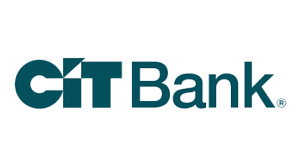You've probably heard the term APY when opening up a savings account, interest-bearing checking account, money market account, or a certificate of deposit (CD). It's common knowledge that a higher APY is better than a lower one, but when asked "What is APY?", most people draw a blank.
It's actually pretty simple. Here's a short primer on APY and how it boosts your bank accounts.
What is annual percentage yield (APY) in banking?
APY stands for annual percentage yield, or how much your balance grows each year. It's the standard way for a financial institution to describe the returns you can earn on your savings, CD, or interest-bearing checking account.
Example: Say you have a $1,000 savings account balance with a 1% APY. In one year, it will grow by $10. This assumes your APY and your balance remain steady, which isn't always the case. But APY gives you a basic understanding of how much you could earn in one year.
APY vs. interest rate
People often use APY and interest rate interchangeably, but they're different. Interest rate is a part of the APY formula, but APY also takes into account how often your savings compounds. The formula for calculating APY is this:
APY = (1 + Interest Rate/Compounding Period)^Compounding Period − 1
Interest rate: The annual interest rate, usually as a decimal.
Compounding period: The number of times the interest is compounded per year.
If you have an account with a 1% interest rate that compounds monthly, the APY would actually be about 1.005%. APYs are usually slightly higher than interest rates, but they're typically close.
When advertising, banks use APY instead of interest rates because APY gives you a more accurate idea of how much you'll earn over time.
Let's say you're lucky enough to find two savings accounts that both offer 5% interest rates. One compounds monthly: its APY is about 5.12%. But if the other compounds daily: its APY is about 5.13%. If you deposited $1,000 into each account, you'd earn about $0.10 more with the one that compounds daily, even though they both have the same interest rate.
The long-term compounding power of APY
APY and compound interest aren't going to turn pocket change into thousands of dollars overnight. But with enough time, they crank up the value of your savings.
Let's say you open a $10,000 CD with a five-year term and a 4% APY. Here's how your account balance would grow over time:
| Year | Starting Balance | Interest Earned | Ending Balance |
|---|---|---|---|
| 1 | $10,000.00 | $400.00 | $10,400.00 |
| 2 | $10,400.00 | $416.00 | $10,816.00 |
| 3 | $10,816.00 | $432.64 | $11,248.64 |
| 4 | $11,248.64 | $449.95 | $11,698.59 |
| 5 | $11,698.59 | $467.94 | $12,166.53 |
Each year, your APY is applied to a larger balance. That helps you grow your savings by 21.7% total over five years. Not a bad haul.
Many people are missing out on guaranteed returns as their money languishes in a big bank savings account earning next to no interest. The Ascent's top savings account picks can earn you more than 10x the national average savings account rate.
How savings account APY changes over time
Growth estimates assume your APY remains steady. That's the case with most CDs, which lock in your rate for the full term. But savings accounts and interest-bearing checking accounts may change their APY on the fly.
APY changes based on other benchmarks, like the prime rate. When the prime rate falls, bank account APYs tend to fall, too. When the prime rate rises, you may see your savings account APY climb. But this is only a general rule of thumb. Banks determine their own rates.
Finding the best APY for your savings
APYs vary widely by account and by bank. Brick-and-mortar banks tend to offer much lower APYs than online savings accounts because they must spend cash on branch maintenance. Online banks don't have to do this, so they can charge you fewer fees and offer you high-yield savings accounts with better APYs.
There are other features to consider when choosing a savings account, such as customer service and easy access, but APY should definitely be one of your deciding factors. A top APY can grow your savings quickly and earn you passive income.
High-yield savings account comparison
We recommend comparing high-yield savings account options to ensure the account you're selecting is the best fit for you. To make your search easier, here's a short list of standout accounts.
Still have questions?
Here are some of the other questions we've answered:
FAQs
-
It depends a lot on current economic conditions and the federal funds rate. As of August 2023, the average interest rate on savings accounts is 0.43%, according to the FDIC. But APYs on high-yield savings accounts can be more than 10 times that.
-
No. APR stands for annual percentage rate. Credit card companies and lenders use it to help you calculate the yearly cost of borrowing money.
Our Banking Experts
We're firm believers in the Golden Rule, which is why editorial opinions are ours alone and have not been previously reviewed, approved, or endorsed by included advertisers. The Ascent, a Motley Fool service, does not cover all offers on the market. The Ascent has a dedicated team of editors and analysts focused on personal finance, and they follow the same set of publishing standards and editorial integrity while maintaining professional separation from the analysts and editors on other Motley Fool brands.


